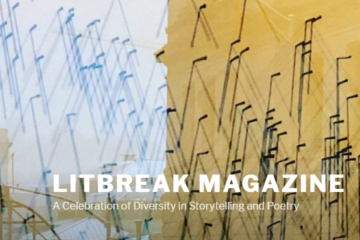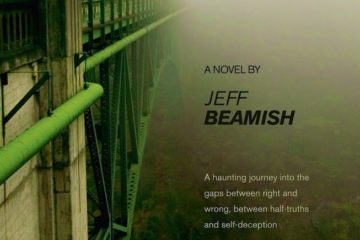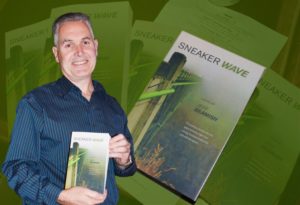Which books helped inspire me to write my new novel, No, You’re Crazy, which is scheduled for release next May? See my recent article in Shepherd.com, a year-old website focused on book reviews. My piece in titled, Best novels that question the nature of reality.
Fiction
My short story, This Heaven and Hell We Create, published in Litbreak Magazine
This Heaven and Hell We Create is a short story picked up by Litbreak Magazine in September 2020. It gives a taste of my novel, No, You’re Crazy, scheduled for release by Roundfire Books in May 2023. In this harrowing look at mental illness and neurodiversity, a runaway teenage girl beset by guilt and suicidal thoughts seeks comfort and salvation in her own tangled reality. Somewhere between exploring how we define who we are and examining the power of faith and survival, this story dares ask, Who gets to decide what’s real?
Writing
Author Lorna Suzuki interviews me about my novel Sneaker Wave and the writing life
B.C. author Lorna Suzuki interviewed me about my novel Sneaker Wave and about the writing life, in her blog All Kinds of Writing, on Sunday, Jan. 12. Lorna is a script writer and creator of the Imago Fantasy series. Her books have been optioned for a motion picture trilogy. Below is part of the interview. To read the entire interview, click here
 Jeff Beamish: I hate to use the word inspiration when talking about senseless tragedies like the Reena Virk murder, but, yes, that was one of three incidents in B.C. involving so-called codes of silence that in part moved me to write Sneaker Wave. The first was the 1989 murder in Surrey of a 12-year-old boy named Shawn Tirone by a teenage acquaintance in a case where dozens of teens heard about the killing but few came forward to police. I covered the case as a newspaper reporter and I can remember interviewing the mother of one of the first kids who spoke up, a boy who wasn’t afraid to do the right thing even if it caused him trouble. The third case was the 1998 manslaughter death of Bob McIntosh in Squamish after he went to break up a house party. While each case is extremely different, there was that one moment in each where everyone involved agreed it was in their best interest to keep quiet about a horrible act. I’m fascinated both by how these people got to that point, and how they got away from it. In Sneaker Wave, my main character Brady Joseph acquiesces, and, for him, the stakes get higher as weeks and months turn into years.
Jeff Beamish: I hate to use the word inspiration when talking about senseless tragedies like the Reena Virk murder, but, yes, that was one of three incidents in B.C. involving so-called codes of silence that in part moved me to write Sneaker Wave. The first was the 1989 murder in Surrey of a 12-year-old boy named Shawn Tirone by a teenage acquaintance in a case where dozens of teens heard about the killing but few came forward to police. I covered the case as a newspaper reporter and I can remember interviewing the mother of one of the first kids who spoke up, a boy who wasn’t afraid to do the right thing even if it caused him trouble. The third case was the 1998 manslaughter death of Bob McIntosh in Squamish after he went to break up a house party. While each case is extremely different, there was that one moment in each where everyone involved agreed it was in their best interest to keep quiet about a horrible act. I’m fascinated both by how these people got to that point, and how they got away from it. In Sneaker Wave, my main character Brady Joseph acquiesces, and, for him, the stakes get higher as weeks and months turn into years.Writing
Where do great story ideas come from? Or more aptly, what do Stephen King and Leonardo Da Vinci have in common when it comes to creativity?
So a writer can arrive at an idea for a scene or a story in dozens of ways – plotting, brainstorming, dreaming, stealing and sometimes simply stumbling upon them in a manner they don’t understand. But whatever the process, some of the best ideas have one thing in common in their origin. And that one thing is actually the use of two things – two very different things.
 |
| Da Vinci |
So what does this have to do with Stephen King, who has used his often dark creativity to sell 350 million books? King, in his 2000 book On Writing: A Memoir of the Craft, tells the story of working as a high school janitor one summer and venturing into the girls’ changing room, a foreign place with tampon dispensers and shower curtains. Later he would envision the opening of a story, a girls’ gym shower room where there were no curtains and one girl gets her first period and is pelted with insults and tampons from her nasty classmates. The girl fights back the only way she can, through telekinesis, the movement of objects through thoughts or willpower, a power King had read can come to some girls in their early adolescence, at about the time of their first period. Two unrelated ideas – adolescent cruelty and telekinesis – came together to provide the start to his first published novel, Carrie. It might be a story, and not one of Da Vinci’s inventions, but the creative process is the same.




